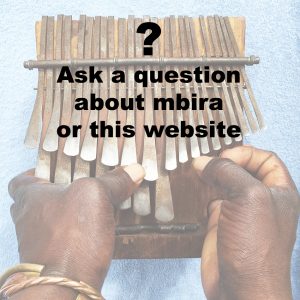Erica Azim answers your questions about mbira — the music, the instruments, the people, and the cultural traditions behind them. Questions about this website and the MBIRA non-profit organization are also welcome. If Erica doesn’t know the answer to your question, she’ll ask one of her many Zimbabwean mbira player friends and relay their answer.
Read current questions and answers below.
